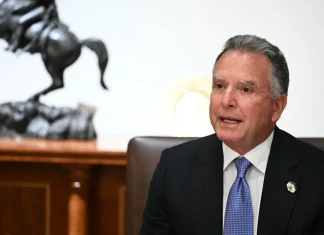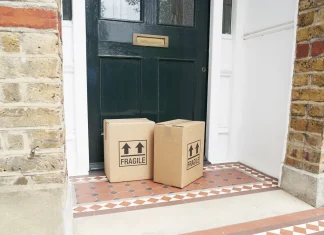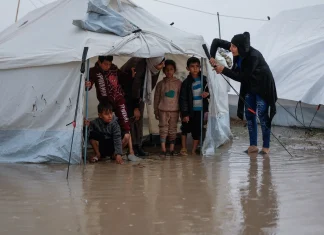France’s Inferno: The Fiery Ordeal of the Mediterranean Wildfire That Shook a Nation
Imagine the searing heat of a midsummer day—the sun blazing relentlessly, the scent of pine and dry grass turning acrid, smoke thickening the air like a grim fog. This was the grim reality that gripped southern France’s Aude department this week, as the country battled its largest wildfire disaster in over half a century. The flames, hungry and unstoppable, devoured 16,000 hectares—an area larger than the entire city of Paris—engulfing forests, fields, and homes with terrifying speed. Though the inferno is now contained, the battle is far from over.
A Summer Scorched by Fire
The Mediterranean coast, renowned for its azure waters, sun-soaked beaches, and vineyards kissed by the warm sun, became a battleground between nature’s fury and human resilience. The wildfire erupted at a time when the region usually bustles with tourists, filling local markets and seaside cafés, the hum of foreign languages blending with southern French dialects. Instead of laughter and leisure, the inhabitants faced hurried evacuations, the acrid tang of smoke, and a heartbreaking tally of devastation.
Christophe Magny, the stoic chief of the region’s firefighting unit, painted a picture of the ongoing struggle: “The fire is contained but … until Sunday evening the fire will not be under control.” His words resonate with the weight of experience—that perilous line firefighters walk each day between victory and disaster.
The Human Face of a Wildfire
Among the scorched ruins of Saint-Laurent-de-la-Cabrerisse, a village steeped in history and tradition, the tragedy struck deepest. A 65-year-old local woman was found lifeless in her blaze-ravaged home. Her story is a stark reminder that amid the chaos, the flames claim the most precious and vulnerable.
Local baker Marie Dubois, who narrowly escaped with her family, shared with a trembling voice, “We were packing our things when the sky darkened, as if night had fallen unexpectedly. The air was thick with smoke, and the fire was chasing us. We left everything—we didn’t know if we’d ever return.”
The human cost does not end there. Several injuries, including serious burns suffered by a resident and more minor wounds affecting others, pepper the unfolding narrative. Nineteen brave firefighters, the frontline warriors, bore injuries as they grappled with the unyielding blaze, including one severe head wound. Their sacrifice anchors a story of communal courage in the face of elemental wrath.
Nature’s Unforgiving Hand
What fuels such monstrous wildfires today? Experts point relentlessly to the larger canvas of climate change. Across Europe and the world, summers are growing hotter, drier, and unrelenting. Heatwaves, once a rare visitor, now stretch across weeks. Vegetation dries to tinder; landscapes exchange their verdant greens for brittle browns.
Dr. Laura Benedetti, a climate scientist specializing in wildfire research, explains, “These record-breaking wildfires are no accident—they are a direct symptom of our warming climate. Mediterranean Europe is particularly vulnerable due to its hot, dry summers and wind patterns like the tramontane, which can spread fires rapidly.”
The tramontane wind—an ancient force sweeping down from the north like a natural whirlwind—now acts as an unwelcome accomplice to flame. As Aude’s firefighting force—1,400 strong—prepared for the forecasted return of the tramontane and sweltering 40°C (104°F) heat, concerns ran deep. The heatwave warning, a modern-day sentinel of ecological distress, signals dangers beyond just discomfort—it’s an urgent call for preparedness and resilience.
Community Resilience and Recovery
The wildfire forced roughly 2,000 residents to evacuate, a sudden and wrenching disruption during a normally vibrant tourist season. Yet, by the following evening, many were allowed to return home, a tentative step toward normality amid lingering ash and uncertainty. The reunion between people and their damaged homes is a bittersweet moment—hope and heartbreak commingle in the charred soil.
Local mayor Jean-Luc Perrot reflected, “The destruction is immense, but the spirit of our community is stronger. We will rebuild, clear the forests, and ensure the safety of our land for generations to come.”
His words echo a timeless truth: in the shadows of disaster, communities often discover new wells of solidarity and courage. Aid groups have mobilized, emergency services continue their vigilance, and neighbors open their doors to those displaced—acts of kindness weaving a lifeline through the gloom.
The Global Reckoning with Wildfires
This French wildfire is not an isolated incident but part of a global pattern. From the forests of California to the bushlands of Australia, wildfires increasingly define our age. Each blaze tells a story of ecosystems under stress, human habitats at risk, and a planet speaking in the fiery language of its changing climate.
As readers around the world witness these calamities, questions arise: How do we confront the root causes while managing the immediate crises? How do we balance human expansion with environmental stewardship? And fundamentally, how do we prepare, as global citizens, for a future marked by growing climatic uncertainty?
Perhaps the most poignant lesson from Aude’s wildfire is the liminal space between destruction and hope—where flames promise desolation but also spur renewal, where danger provokes unity, and where a shared vulnerability calls us all to greater awareness and action.
Final Thoughts: A Call to Awareness and Action
As you reflect on the hurled embers and heroic efforts in the Aude wildfire, consider this: each fiery season is a reminder that our planet’s health and safety are intertwined. The Mediterranean’s blaze is a mirror reflecting broader environmental shifts globally. We live in an era where natural disasters are not just headlines—they are urgent narratives shaping our collective future.
What can we learn from this? How can the stories of those battling and enduring such infernos inspire us to address climate change with renewed vigor? And how might each one of us contribute, in small or substantial ways, toward a world where communities no longer live in the shadow of relentless flames?
France’s great wildfire of 2024 is a tale still unfolding, a vivid chapter testifying to both the terror and tenacity of life. As smoke clears and the scorched earth breathes again, may we carry forward its lessons, its warnings, and its fiercely resilient hope.










